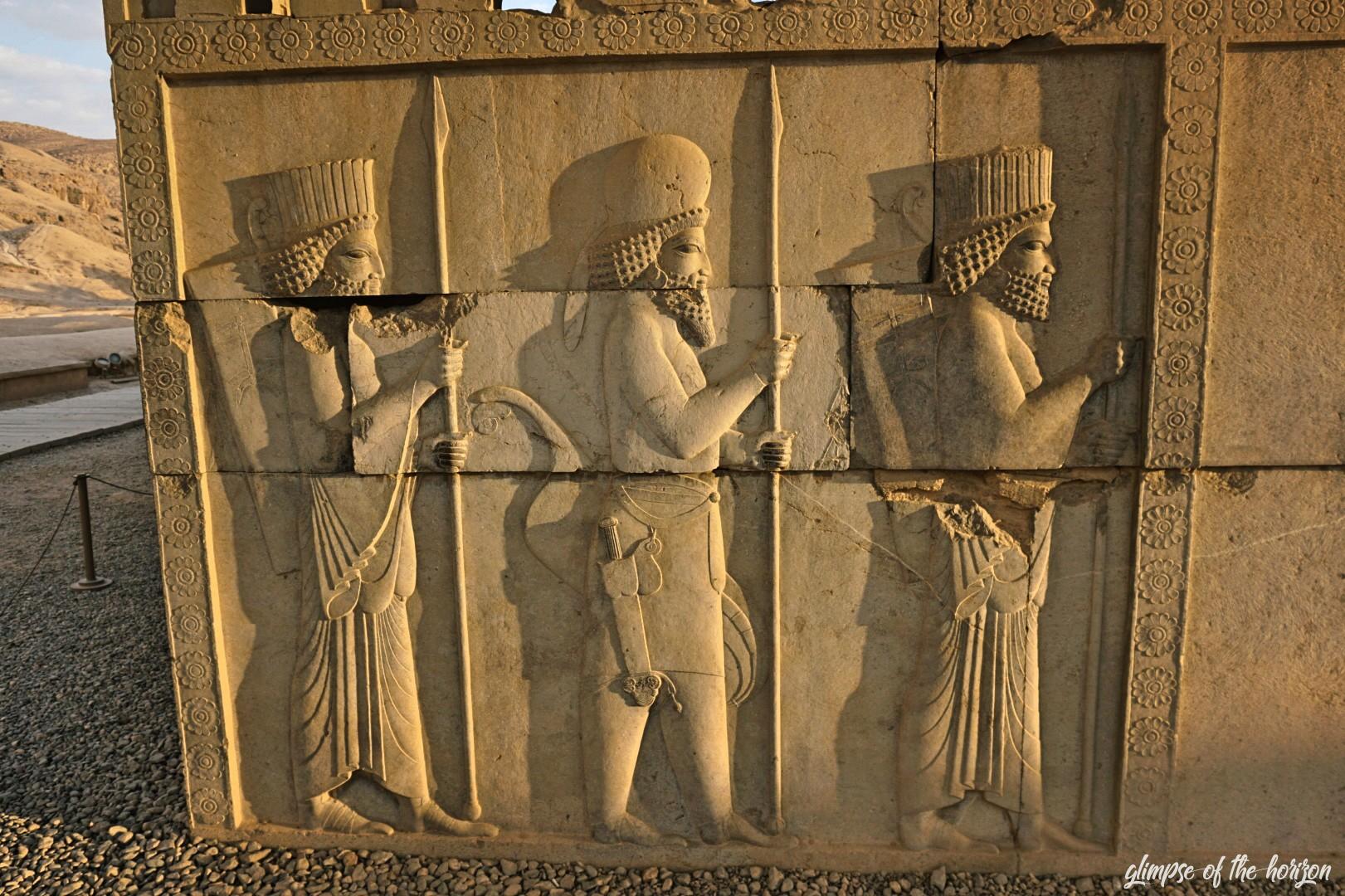Shiraz – Persia then and now
Our last stop in Iran led us to the south. Shiraz is a big city surrounded by ancient Persian sites and home to some of Iran’s most important sights. The endpoint of our Iran trip also marked our personal highlight – but one after the other.
As we set off on our way from Yazd to Shiraz, we knew that there would be one big station on the way: Persepolis. The ancient Persian city is the highlight of many Iran travellers at all. Of course, we also wanted to visit this excavation site. Before we got there, we made a detour to the necropolis, also called Naqsch-e Rostam.

The traces of the Persian Empire
Here, six kilometres from Persepolis, four great kings of the ancient Persian Empire are buried. The graves are carved into the steep rock face – below are pictures of the kings carved into the stone. Although one cannot visit the graves themselves, this place has something magical about it – the graves are thousands of years old and very well preserved.


This gave a foretaste of the archaeological highlight at Shiraz: Persepolis was one of the capitals of the ancient Persian Empire, which was destroyed and burned down by Alexander the Great in 330 BC. The remains can still be seen today. The area is impressively situated on a plateau. With the help of virtual reality glasses you can look around in the old Persian city if you walk around it.

These technical aids are also necessary, because Alexander the Great excoriated Persepolis. Of the once so huge buildings only columns and parts of walls remained. One can imagine how splendid this place must have been. Especially if you climb up the small hill and make your own picture of this ancient Persian city.

Exciting and unagitated
Shiraz was the fifth larger city we visited in Iran. Right after our arrival in Shiraz we noticed how very nice and friendly the people were that we met here. Sure, on our journey we met almost exclusively nice people until then. But here they were courteous and equally reserved.

We also noticed this when we entered the bazaar of Shiraz. The sellers of the different bazaar stands were not pushy – on the contrary they were happy about tourists. So the bazaar visit was exciting, but also in a positive sense unagitated.


The Power of the Dark
Shiraz is a city that really unfolds its flair in the dark. All the sights of the city are open and beautifully illuminated. Be it the old citadel in the centre of the city, the holy shrines of the city or the tomb of the poet Hafiz. The city is alive as soon as the sun sets.



We also had a good time culinarily: On our way from north to south we personally enjoyed it better and better. The people of Shiraz like to praise their dishes and are proud of local specialities. Wonderful service, beautifully designed restaurants and food that really tasted great – we found all this here in Shiraz.


Colourful finish
Before we finally left Iran, there was another highlight waiting for us: the pink mosque. Our plane started at 12 o’clock, so there was still enough time to admire the colorful spectacle in Shiraz. At 7 a.m. the pink mosque opens and allows visitors to explore it.
The heart of the mosque is a hall with glass windows. These windows are oriented towards the sun. This creates an incredibly beautiful colour spectacle in the hall at sunrise and direct sunlight. Green, blue and red patterns adorn the floors, columns and ceilings of the mosque.


It was a wonderful conclusion to our trip to Iran. We want to remember this country in the same way: Colourful, happy and warm-hearted. Thank you, Iran!

What Shiraz has left in memory:
- The Persian cutlet has nothing to do with the German cutlet.
- VR glasses can help with history lessons.
- Gravestones should be considered a place of joy much more often.
- Not everything looks better in photos.
- Alexander the Great had a real desire for revenge.
